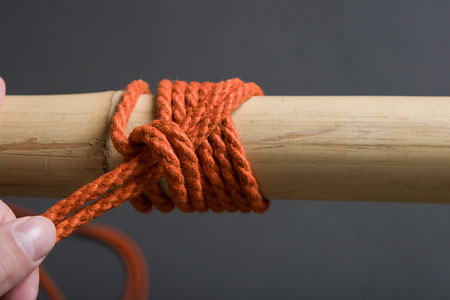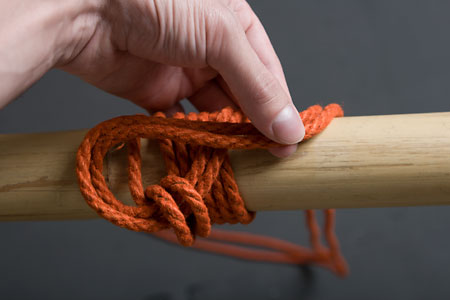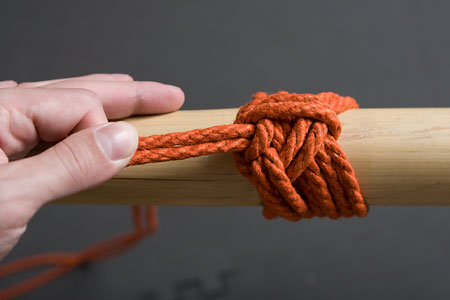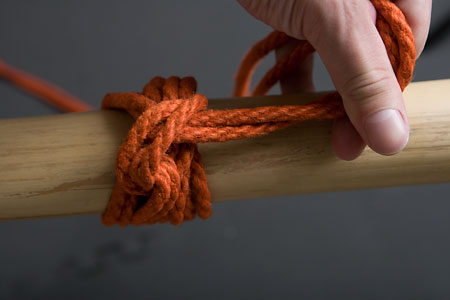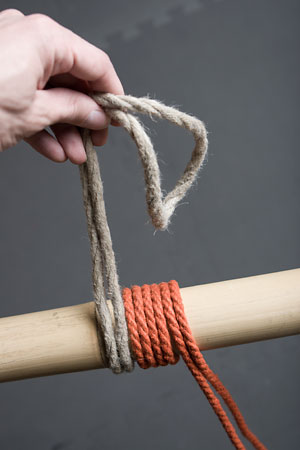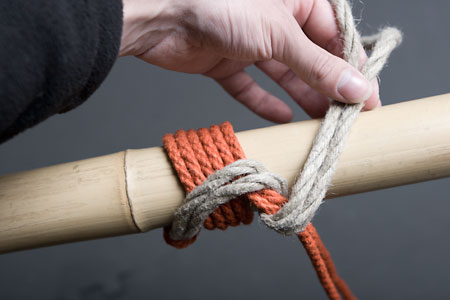This is a column tie specifically designed to be easy to learn for people brand new to rope. It is an adaptation of a tie I learned from Nell, who learned it from Max, who developed it based on earlier work with yet murkier origins. As far as we can agree, the most historically accurate and descriptive name for this would be the Double-Modified Fishermen's Bend.
Thanks to Nell and Max for help producing the video, as well as introducing me to the original concept, although I hasten to add that what I present here is not Max's canonical version of the tie, and any pitfalls should be solely attributed to my own tinkering with it.
It's also worth noting that none of the three of us use this in our daily tying -- various more advanced column ties are quicker with sufficient practice -- but this is a good place to start if you're just looking for something easy to tie someone to the bed with.
You might notice that in the single-column video I do four wraps, and in the...



